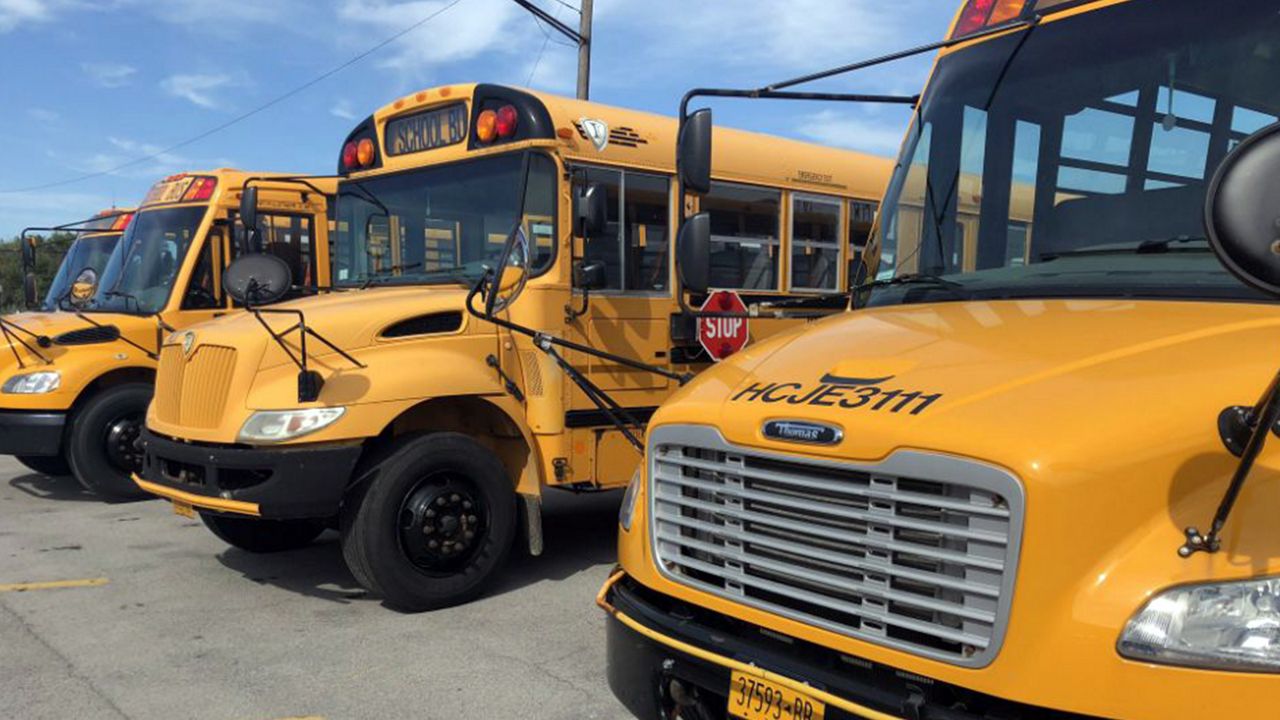COLUMBUS, Ohio — The Ohio National Guard conducted an analysis this fall on options to support school districts struggling to staff bus routes, but the plans have not moved forward, officials said.
What You Need To Know
- Some school districts continue to struggle staffing bus routes
- The state explored a plan to involve the Ohio National Guard
- A study found that 90% of school districts have been impacted
School districts in Ohio have reported disruptions related to bus driver staffing this school year, including delayed routes, shortened school days and temporary transitions to remote learning.
A study by the Ohio Association for Pupil Transportation found that 90% of school districts have been impacted, with 3.7% of the bus routes in the state not being covered on a daily basis, according to Doug Palmer, the Ohio School Boards Association’s transportation consultant.
“Bus driver shortages are causing office staff and mechanics that have their credentials; they're being forced to drive, so that's impacting schools in a variety of ways because office staff aren’t there to answer the phones. Mechanics are having to work a lot longer hours to get the buses services. It's having a very, very negative impact on the whole school transportation operation,” Palmer said.
On Tuesday, Wooster City Schools reported numerous delayed routes amid an ongoing shortage that has impacted the district for weeks.
Westerville City Schools had a remote day Friday for two of its schools due to bus driver staffing issues.
A spokesperson said the district is working to attract more drivers, offering various incentives including paid training, covering all CDL fees, making the starting salary $18-19 per hour and offering a $250 signing bonus. Switching to remote days is a last-resort option — the district will first try to have drivers “double back” and drive multiple routes, which could require a delayed start in the morning or an early release in the afternoon.
Earlier in the school year, Gov. Mike DeWine said Ohio was exploring an option for the National Guard to get involved. The idea came from Massachusetts, where Gov. Charlie Baker activated nearly 240 members of the Guard to drive students as part of a mission that ended two weeks ago.
DeWine said in September that there could be a downside to activating the National Guard in that it would pull members away from their other civilian duties, many of which are also important to the wellbeing of the state.
Spokesperson for the Ohio National Guard Stephanie Beougher said the state has not used any Guard members to drive bus routes this year.
“As directed by the governor, a mission analysis was conducted with state partners to determine possible support to school districts experiencing bus-driver shortages. No mission has been assigned at this time,” Beougher said.
According to Palmer, DeWine does not feel it would be the appropriate move at the time, noting that state codes would have to be changed to allow the Guard to transport students.
“It’s up to the governor's discretion on what his administration feels is a crisis point where they would have to convene,” Palmer said. “Gov. DeWine said we haven’t reached that crisis point.”
To try to address the shortage of drivers, the state has made additional funds available to the Ohio Attorney General’s office to expedite background checks for CDL applicants.



